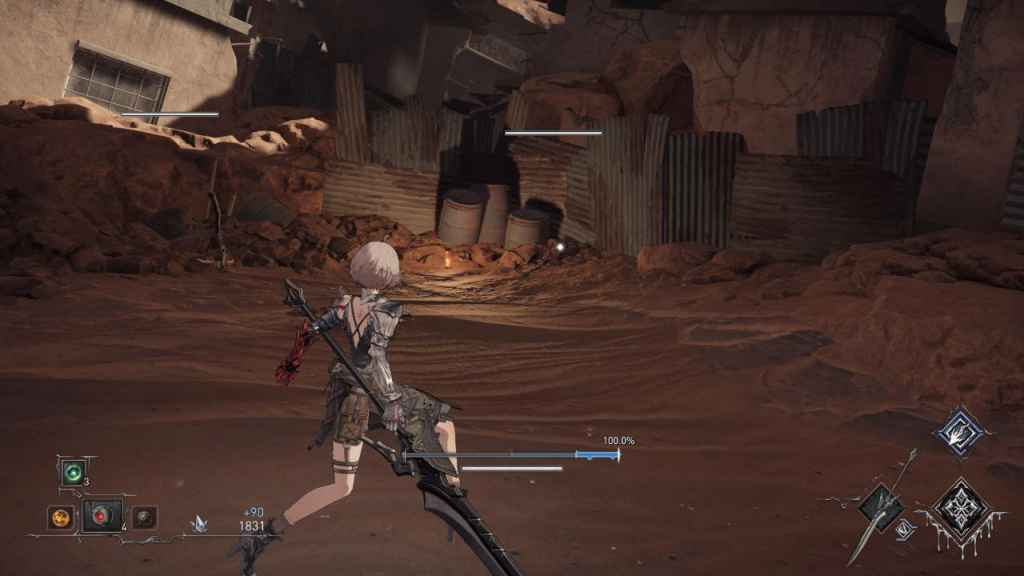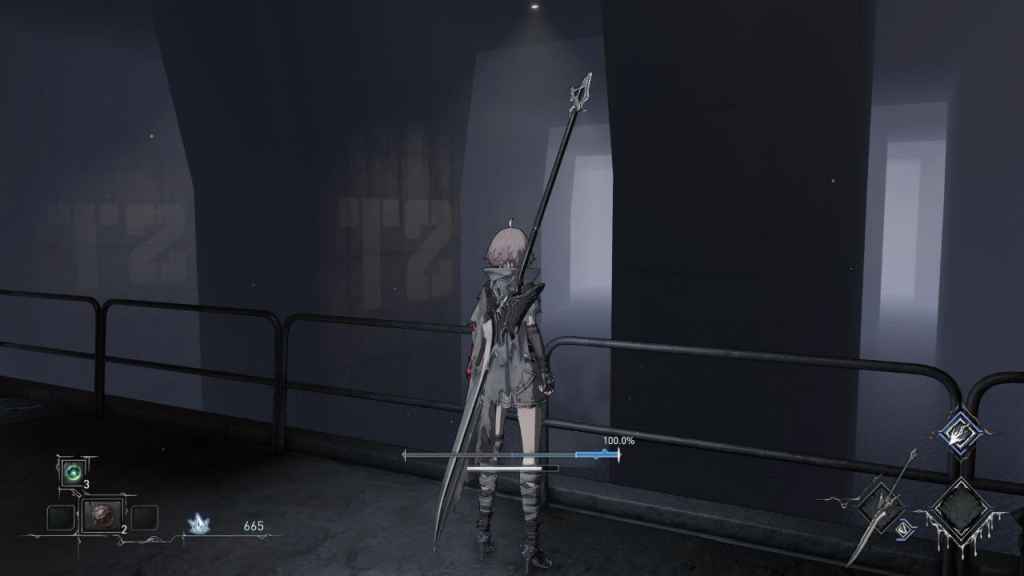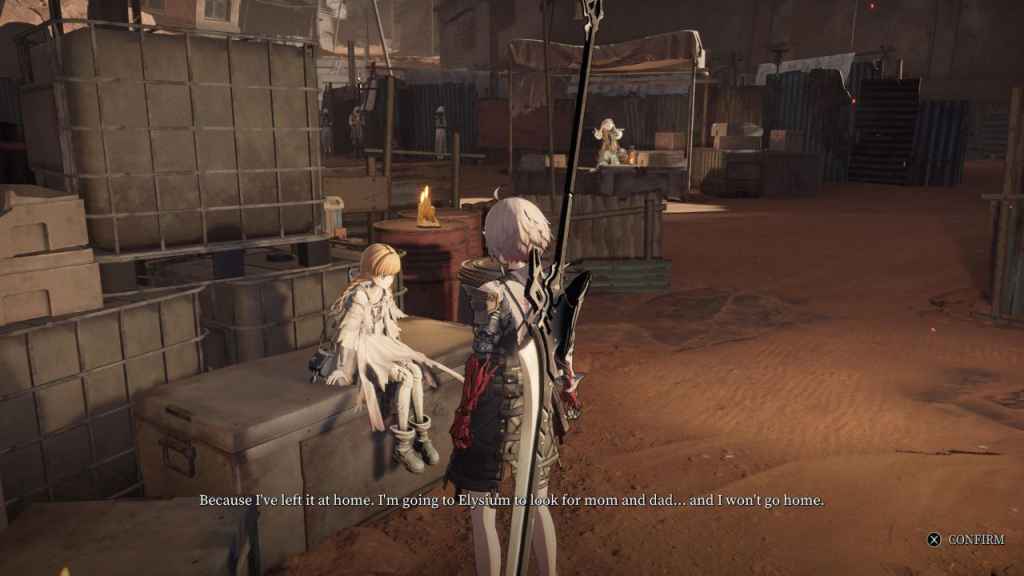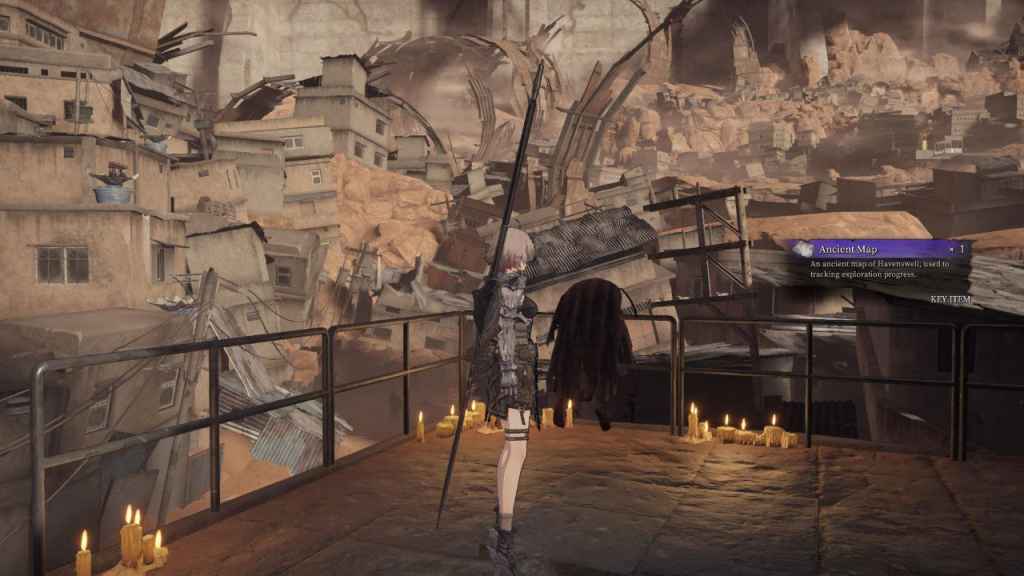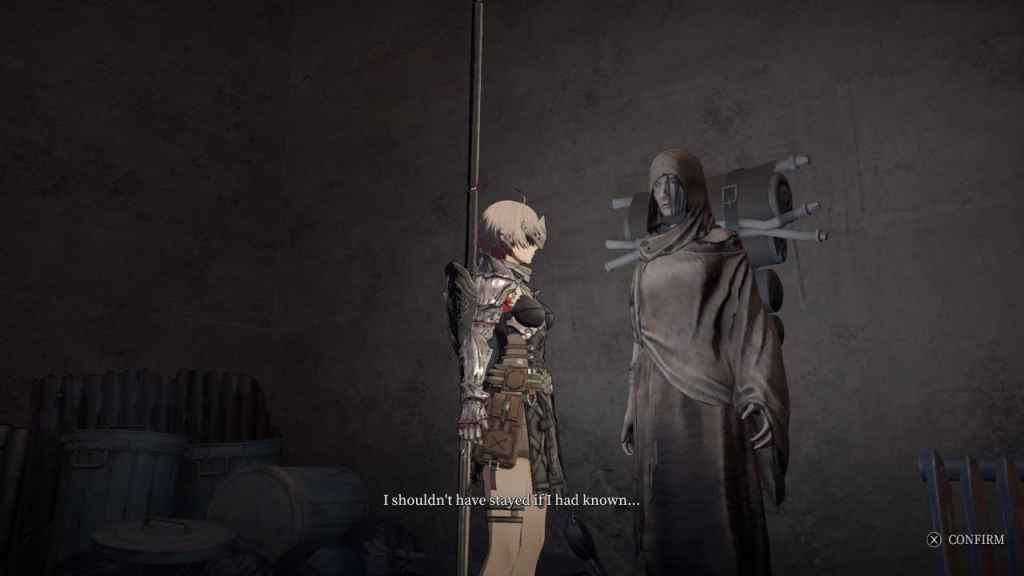AI Limit PS5 Review. The last few years have seen a slew of Soulslikes be released for storefronts. Being spearheaded by the talented team at FromSoftware, the genre is known for its high skill floor, punishing game design, and intricately designed worlds that all come together to make a uniquely engaging and immersive experience. I preface my review of AI Limit with this because this game comes far past the crest of the Soulslike wave, and it suffers as a result.
My time with AI Limit was an inconsistent one that while not having any fatal flaw, never felt like it actually developed into anything that I hadn’t played before. Everything here feels a bit too familiar for me to say that it goes above and beyond. You can eat mud, though. That’s something.
AI Limit Review (PS5) – Muddying the Waters
Starting From the Bottom
I’m conscious of not repeating myself here or being mean-spirited to what is ultimately a solid game at its foundation, but AI Limit demands that you wade through a sea of exposition in order to see the unique things that it has to offer. Even down to the premise, this isn’t something that a genre veteran won’t have come across before.
You awake as a protagonist without an idea of who you are, born into a world following a tragedy. It’s your mission to ascend from the literal gutter to learn about your purpose and the history of the world that you trudge through. You’ll be exploring dingy sewers, slums, and ruined cities as you steadily battle a catalogue of dangerous enemies.
The world that you explore has been ravaged by the vague threat of the “Mud,” and this presence has thrust normal life into a dangerous test of survival; a world where innocent people are attacked and forced to live in slums to survive.
The city of Heavenswell is an interesting enough setting, but once again falls to the same critique of feeling like territory that’s been walked through before, without much to set itself apart from its contemporaries. The juxtaposition of the destroyed city against the pristine spaces above – while striking – fails to inspire anything other than a comfort in knowing where I was going and what I was doing.
Luckily, these areas are visually appealing; the atmosphere is strong from the outset, with a strong sense of liminality in some of these desolate urban landscapes. Looking out into the fog of the sewers and seeing areas you won’t ever get to explore was strangely serene, and it contributed to a sense of scale on the journey, if nothing else.
Slinging Mud
Combat and general gameplay takes the safe approach as well, being steeped in the foundations of its forefathers. Attacking is set to R1, you’ll have access to a variety of main weapons that each have a unique method of attack. Some will be heavier with a punch, and some will be far lighter with a greater emphasis on mobility.
These options are vital in a Soulslike, and each one feels fairly balanced in the large. I mostly chose to play using the greatsword equivalent and found combat engaging and fun.
You’ll find ‘branches’ as you venture through areas that function essentially as bonfires, you’ll have access to a limited but refilling health item and you’ll use acquired currency to level up one of five core stats, to make yourself that little bit less squishy when you come sword to sword with a formidable foe.
Bosses did generally thread the needle of being hard but not unfair. Patterns were flexible and encouraged you to navigate around them as you see fit, depending primarily on your approach to building Arissa.
Getting into Sync
This isn’t to say that AI Limit doesn’t bring its own goods to the table, the sync system is an intriguing wrinkle that changes the way that you approach combat, and the risks that you take before launching in unprepared.
As you attack successfully, your “sync rate” goes up, to a maximum of 100%. At a high percentage, your attacks do more damage and you gain access to powerful augments and spells on command. These range from projectile-based weaponry to the ability to parry or shield from heavy attacks. With the cost of these abilities being sync, you have to carefully balance how you use these more defensive options.
A low sync-rate means you risk lowering your overall damage output, and making it even harder to make a comeback when you need to. It’s an engaging push-and-pull that forced me to make some choices in the middle of a boss and think about what might come after. If anything, I wish the system was that bit more punishing and prone to swinging one way or the other.
This feeling of slight cushioning is present throughout the game, with one major change being a consideration for players being stuck on a particular boss. Unlike many other games in this subgenre, you never lose access to your currency on death. While you might be sent back to a branch after a gruelling gauntlet, you’re never tasked with rerunning. You just lose a small sliver of what you have, giving you the chance to invest and try again.
It’s a small inclusion, but it’s a noteworthy diversion in a game that is otherwise an incredibly derivative retread of mechanics.
Looking at the Bigger Picture
Setting everything aside, AI Limit is a pretty consistently striking game in terms of its visual direction. To some extent, there’s a reason why these settings are so lauded in the industry, and it’s because they work. There’s a type of environmental storytelling that’s automatically pushed through the exploration of abandoned buildings and failing infrastructure.
And despite the word jumble that’s thrown at you in the early hours of the game, underneath that is a pretty serviceable story that tackles religion and the role it has in people’s lives, accompanied with some pretty interesting set pieces in its own right towards the latter portion of the game.
Everything here once again serves more of a function than contributing to the tapestry that these games need. It never felt like there was a greater ambition with any of the pieces here, which was a shame. There’s the potential for something very cool here, and I can absolutely see the seed of that idea buried under the fluff.
Most curiously, there was a moment in the game where Arissa is talking to another survivor of Heavenswell, and an entire clash of art style appeared out of the blue. The majority of the important characters throughout AI Limit look like they could have been picked out of a MiHoYo game of some description – and I mean that to be a compliment. The models are clear, expressive and look pleasant. It’s not often that we see these types of characters navigating such a bleak landscape, so I was pleasantly surprised at the direction here.
Strangely, that doesn’t appear to be true of everyone. Whether or not this was intentional, it looks bizarre and only compounds my complaints about this game not appearing to have a clear vision of what it wants to be. A character built like an anime protagonist is juxtaposed against someone who is built entirely realistically, and it was bizarre.
This might sound like a small detail, but it encapsulates every single thought I’ve had during my time with AI Limit. I rarely find myself this conflicted about a conclusion, but so much of this game is spent in ways that make me wonder just what the intention was here. There’s a foundationally sound experience here, but the glimmers of new ideas tell me that this could have been that much more than just “another” entry to cater to an audience that is already catered to.































